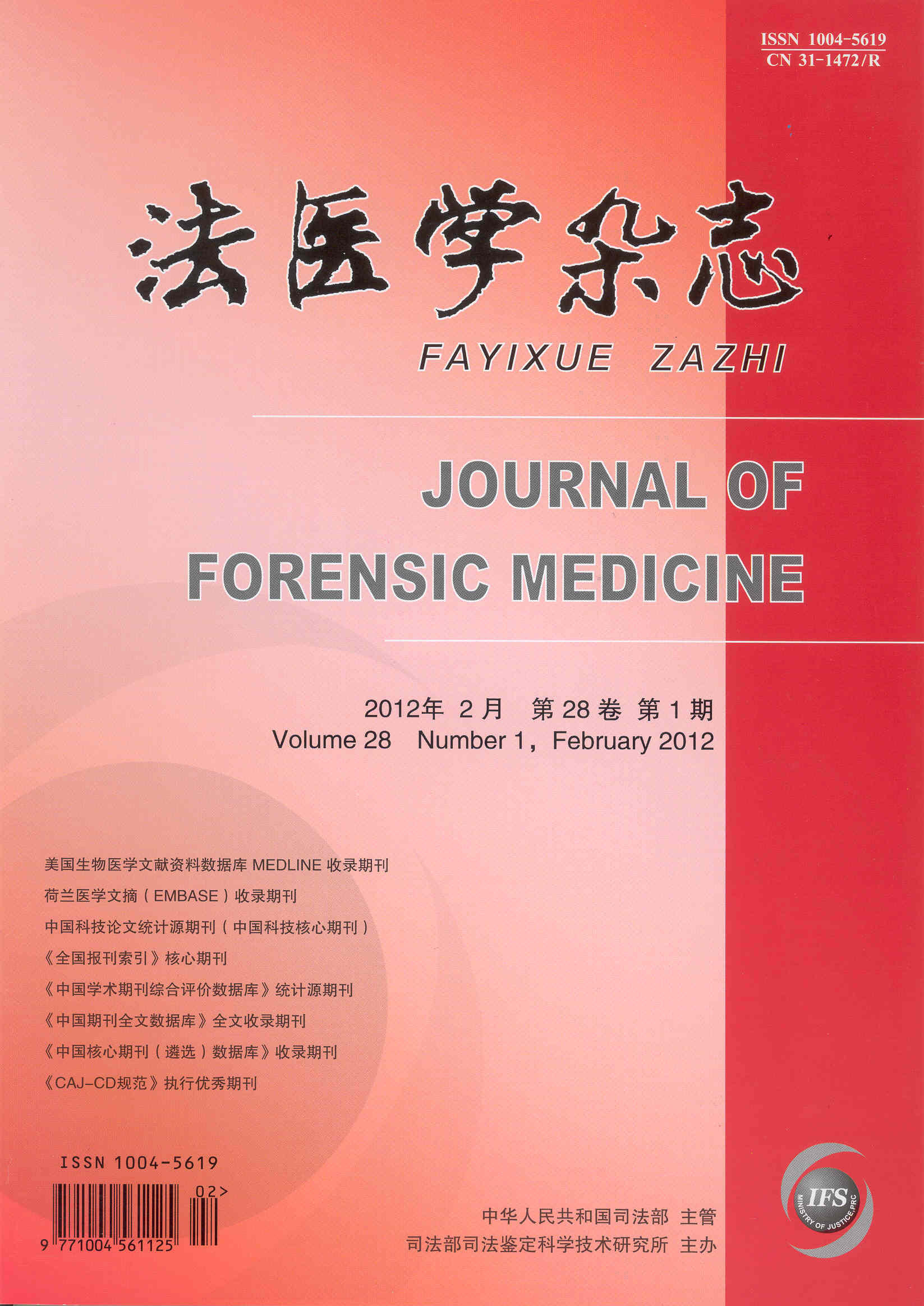|
|
Changes of Biomechanical Properties of Soft Tissues in Underwater Corpse for Postmortem Interval Estimation
TANG GU, ZHOU HUI, WANG JIA-WEN, ET AL
2012, 28(1):
6-11.
DOI: 10.3969/j.issn.1004-5619.2012.01.002
Objective To explore the postmortem changes of biomechanical properties of underwater corpses and value for estimating postmortem interval. Methods SD rats were sacrificed by cervical vertebra dislocation and stored in the water at constant temperature. The vessel wall, skin, muscle, small intestine and colon were sampled at different postmortem time points (0 h, 6 h, 12 h, 18 h, 24 h, 30 h, 36 h, 42 h, 48 h, 60 h, 72 h, 96 h, 120 h, 144 h, 168 h, 192 h). The biomechanics properties of different soft tissues including ultimate load, strain, maximum stress were measured by electronic universal material testing machine. Results Except for the vessel wall, the biomechanics properties of skin, muscle, small intestine and colon showed linear decrease gradually after death. Each tissue displayed its obvious “window period” for PMI estimation. Conclusion The time-sequential changes of biomechanical property parameters of soft tissue in underwater corpses are significantly correlated with PMI and it could be a simple and quantitive new technology for estimating PMI. The specific heat capacity of the heat-eliminating medium around the corpses probably is one of the physical factors to influence algor mortis, autolysis, putrefaction and biomechanics properties.
Related Articles |
Metrics
|


